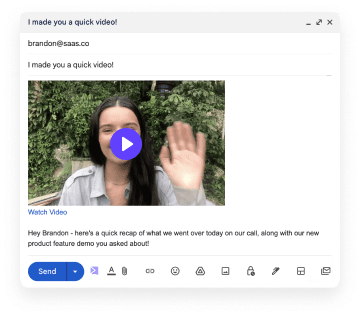In B2B sales and marketing, choosing the right strategy is everything. Whether you're building your lead pipeline, nurturing prospects, or closing deals, it helps to understand what’s working behind the scenes. That brings us to a common question: what is the difference between inbound and outbound sales?
This isn't just a buzzword battle — knowing the difference between these two approaches will help you make smarter decisions about budget, tools, and tactics. Each strategy has strengths, challenges, and ideal use cases.
In this post, we'll break down the key distinctions between inbound and outbound strategies, show real-world use cases, and help you decide which (or both) fits best for your team.
Table of Contents
- What Is Inbound Marketing and Sales?
- What Is Outbound Marketing and Sales?
- Key Differences Between Inbound and Outbound
- When to Use Inbound vs. Outbound
- Tools and Real-Life Examples
- FAQs
What Is Inbound Marketing and Sales?
Inbound means your ideal customers come to you. They find your business through valuable content, search engines, social media, or referrals. The cornerstone of inbound is trust — you attract interest by educating, offering helpful resources, and allowing buyers to engage at their pace.
Examples of Inbound Strategies
- SEO-optimized blog posts answering search questions
- Email newsletters and lead nurturing campaigns
- Downloadable guides or white papers
- Organic social media posts
- Customer testimonial videos
For example, this post on generating quality leads relies heavily on inbound marketing by educating readers with helpful content and encouraging them to take action only when ready.
Why Inbound Works
Buyers today are self-directed. They're researching before they ever talk to sales — and they prefer brands that feel helpful, not pushy. Inbound positions your company as the go-to resource when they’re ready to make a decision.
Inbound's Challenges
Inbound takes time. Search engines need time to rank you, and content creation is an investment. If you're looking for fast lead volume or selling something disruptive that people aren’t searching for yet, inbound may need to be paired with outbound methods.
What Is Outbound Marketing and Sales?
Outbound flips the script — instead of waiting for leads, you go to them. Think of cold calls, cold emails, paid ads, or LinkedIn messages. Outbound puts the control in your hands. You choose the audience, format, and outreach method.
Examples of Outbound Strategies
- Cold email outreach
- LinkedIn DMs or connection requests
- Phone prospecting
- Paid LinkedIn and Google ads
- Direct mail or event follow-ups
Take personalized video outreach, for instance. With a platform like Sendspark, you can create personalized video messages at scale and include them in outbound emails. According to these video prospecting examples, video boosts reply rates by 2x or more when integrated thoughtfully into outbound campaigns.
Why Outbound Works
Outbound is direct and fast. You don’t have to wait for someone to search your service — you can put it right in front of them. It’s especially useful for reaching very specific buyer personas or breaking into new markets.
Outbound’s Challenges
People get a lot of cold outreach. Standing out is harder than ever. This is where techniques like video personalization and thoughtful messaging can make or break response rates. Also, outbound typically requires ongoing investment in tools, data, and training.
Key Differences Between Inbound and Outbound
Outbound
|
Aspect |
Inbound |
|
|---|---|---|
|
Audience |
Attracts people already looking |
Targets chosen prospects |
|
Cost |
Content upfront, lower over time |
Consistent ad or data spend |
|
Speed |
Slow build, long-term returns |
Faster lead generation |
|
Content Type |
Educational, helpful |
Persuasive, direct |
|
Buyer Intent |
Higher - they found you |
Varies - you reach out cold |
When to Use Inbound vs. Outbound
Go Inbound When:
- You want to build long-term brand authority
- You have the resources to invest in content marketing and SEO
- Your prospects search for your solution type
- You’d rather nurture and convert warm traffic
Example: A SaaS brand that helps recruiters streamline interviews could publish blog posts on video for recruitment, organically attracting decision-makers in HR who are already problem-aware.
Go Outbound When:
- You need to generate pipeline quickly
- Your market is niche or not actively searching
- You want control over targeting
- Your sales team is ready to follow up directly
Outbound is especially effective when you tailor your messages. Personalized video outreach, broken down in this video prospecting guide, often wins attention where plain emails are ignored.
Blending Inbound and Outbound: The Hybrid Approach
Most sales and marketing teams blend both strategies for the best of both worlds.
Here’s What That Might Look Like:
- You publish high-quality blog content to pull in leads
- Then your SDR team uses outbound to reach similar companies before they engage organically
- Meanwhile, your sales emails include videos made on Sendspark to stand out in crowded inboxes
It’s not a question of inbound or outbound. For most teams, it's how to coordinate the two so they’re not pulling in different directions.
Tools and Real-Life Examples
Inbound Tools
- HubSpot for blogging, SEO, and lead nurturing
- Google Search Console to monitor performance
- Canva or Descript for visual content
Outbound Tools
- Sales engagement platforms like Outreach and Salesloft
- LinkedIn Sales Navigator — see how to use it here
- Sendspark for sending personalized video messages that scale
Real-World Use Case
One Sendspark customer, Qwilr, used video to boost outbound messaging and saw a 3x increase in reply rates. Another customer, Hipersa, embedded video into follow-ups and cut their sales cycle time almost in half. These results show just how powerful outbound can become when combined with personalized touches.
Final Thoughts
The main takeaway? Inbound pulls people in. Outbound reaches out. Both are helpful — they just serve different purposes.
If you’re building long-term visibility and want to nurture inbound leads, lean into SEO, blogs, and helpful resources. If you're targeting accounts or need quick traction, outbound opens doors — especially when you add personal video messages that stand out.
Looking to level up your outbound strategy or add personalized videos without losing hours? Give Sendspark a try — and see how easy it is to scale video outreach that actually gets replies.
FAQs
What is the main difference between inbound and outbound marketing?
Inbound attracts leads by providing helpful content and letting them come to you. Outbound involves proactively reaching out to prospects through cold emails, calls, or ads.
Is outbound more effective than inbound?
Not necessarily. Outbound can generate leads faster, but inbound tends to bring in higher-intent leads over time. The best results usually come from combining both strategies.
How long does inbound marketing take to work?
Inbound is a long-term strategy. It can take 3–6 months to see meaningful traction from content and SEO, but the leads compound over time and often convert better.
What are examples of inbound content?
Inbound content includes blog posts, SEO-optimized landing pages, white papers, case studies, and educational videos.
What’s the best outbound channel for B2B?
Cold email is still king in B2B outbound, especially when paired with personalization and tools like video. LinkedIn and phone outreach also work well, depending on your audience.
Should early-stage startups focus on inbound or outbound?
Most early-stage startups need results fast — outbound is typically the better starting point. As they scale, inbound becomes critical for sustainable growth.
How can I personalize outbound at scale?
Use tools like Sendspark to record AI-personalized videos, or platforms like Clay and Smartlead to dynamically personalize messages with enriched data.
Can inbound and outbound work together?
Absolutely — that’s what the best teams do. For example, use outbound to target high-value accounts while your inbound engine nurtures long-tail traffic with content




